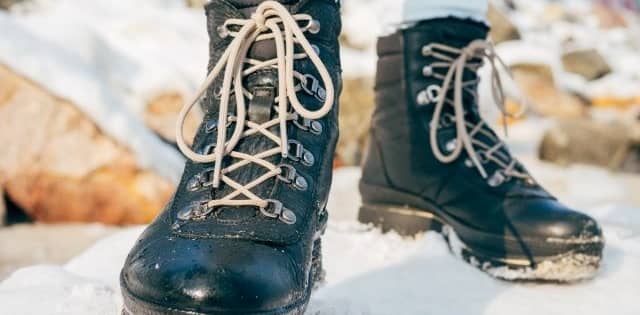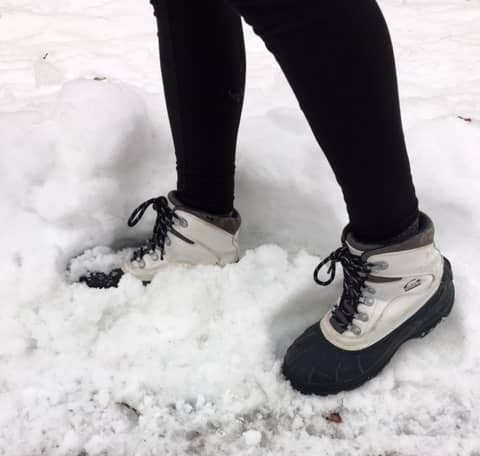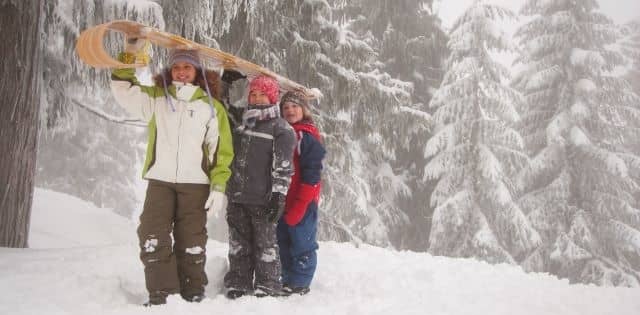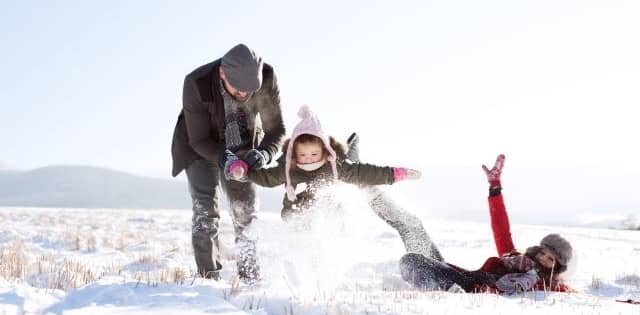The sole of your foot contains more nerve endings per unit area than any other part of your body. According to statistics, 75% of American adults experience foot problems at some point in their life. The human feet are an embodiment of shear heavy-duty strength and fragility. Sophistication and simplicity.
Perhaps that should get you to pay a bit more attention if you stay in a place with cold climate – or will be visiting one – and want to know how best to keep your feet warm with the right type of winter boot insulation.
This guide will cover winter boot insulation in detail so that the next time you are in the market, you can make an informed decision about what’s right for you.
What are insulated winter boots?
In a nutshell, insulated boots are those boots that have the type of build and protection to keep your feet warm and protected in frigid conditions. Generally speaking, these boots will also put up a defense against wind and dampness.
Insulated boots are worn mostly for outdoor activities. Whether you are snowshoeing, waiting for the bus, or clearing the snow in your backyard, with the right kind of insulation, your feet should remain warm and protected from the biting cold.
What boot materials are the warmest for winter

Out of a large variety of boot insulation materials, the most common and trusted ones are Thinsulate, Primaloft, and shearling (or sheepskin. More on the difference later). There are two other materials (Gore-Tex and ThermaPlush) that you may hear about in a winter boot insulation conversation, however, these are not an insulator.
Gore-Tex
Gore-Tex is a thin, porous material whose primary purpose is to provide waterproofing while at the same time allowing your feet to ‘breathe’ as it offers an escape route for perspiration. Even though the material has its ‘magical property’, it offers little as far as heat preservation and regulation is concerned.
Thermaplush
Thermaplush is found in on the inner part of your boot – where your foot makes contact – and is used to provide a soft, comfortable feel. On its own, however, it doesn’t do much in temperature control.
Thinsulate
Made up of the combination of words thin and insulate, Thinsulate is a synthetic fiber material with amazing thermal insulation properties. (Fun fact – It is used in the fabric roof of the iconic Porche Boxster)
In theory, Thinsulate works by trapping air molecules. This prevents the colder air molecules present outside from making their way into the boot, as well as preventing warm air molecules, found within the boot that surrounds your feet, from escaping.
What’s also amazing about Thinsulate is its durability. It can withstand frequent, rough use without getting compromised. It will also not succumb to frequent washes!
When used under a layer of Gore-Tex, it provides a second line of waterproofing.
Primaloft
Also used by big brands such as The North Face, PrimaLoft is a synthetic material made of polyester fiber with an additional casing of nylon. It’s also lightweight.
While it provides excellent protection against biting cold and water, it isn’t as durable as Thinsulate. Over time, fibers may stick together and form bumps. With careful use, it should stay in it top shape – which is why it is found in boots that demand a big budget!
Shearling/Sheepskin
The difference between the two terms is minor and often overlooked. Shearling is when wool is attached to leather while sheepskin is wool attached to sheep’s skin.
This material hands-down wins the race against all other commonly used boot insulation materials as far as warmth is concerned. So warm, in fact, you don’t have to wear socks!
While it excels in one factor, it lags in another – durability. This is not your heavy use material and is best suited to casual purposes such as a walk around town and commuting.
Zylex
Zylex is a type of removable liner designed by Kamik. It comes in 3 layers with at least 4 levels of thickness to tackle different intensities of weather.
Zylex deflects the cold while also helping with moisture regulation within the boot. Zylex liners can be removed, dried and reinserted for your next activity. Convenient!
As with all removable liners, they do not offer the same level of protection as those built within the boot, hence it may not be your wisest choice when you know you will be in temperatures that go much beyond the normal.
OmniHeat
Created and patented by Columbia, this type of insulation reflects heat back on the wearer through the little, silver dots present on it. Its breathability ensures there is no moisture builds up in the boot.
Omni-heat is especially helpful to those who seek protection from the cold but have a conservative budget.
Aerogel
Aerogel was developed by NASA! Not only is it lightweight, it provides excellent thermal protection by stopping heat transfer.
If you are interested in the technical side of it, aerogel is what happens when the liquid in a gel is replaced with gas. It’s this property that allows aerogel to be lightweight. Perfect for anyone who will be on their feet for several hours.

Boot insulation temperature guide
A temperature guide is an approximate scale of a boot’s build and insulation properties to keep your feet warm in varying degrees of cold weather. It’s an approximation since other factors such as your body’s ability to regulate temperature will also come into play in deciding how hot or cold you may feel in your favorite pair of winter boots.
Since temperature ratings are guidelines only, you shouldn’t make it your only criteria when purchasing boots. Think about the type of activity you’ll be doing, what kind of weather you’ll be wearing the boots in (cool versus extreme cold conditions), and your own level of comfort.
You should expect to pay more for boots with high ratings since the layer and amount of insulation varies.
When making a choice between temperature ratings, it’s good to play it a little safe. So, if the temperature is going to be -15, you may want to pick a pair that’s rated at -20 C versus one that is rated at -10 C. Common sense should tell you to not go for a -40 C rated pair if you don’t want steaming feet.
Since many of the big companies have done away with temperature ratings, another way to pick the right pair of winter boots is through ‘gram insulation’
What does gram insulation mean?
Pick a boot and look for a number next to the type of insulation used. What do you see? 200? 400? 600? A number bigger than that?
These numbers are mostly shown on boots with Thinsulate insulation.
Put simply, the higher the number, the more intense the insulation. 200g would mean 200 grams of Thinsulate.
So how do you decide which number is suitable for you? To answer that, you need to think about two major factors.
Temperature
There are no points for guessing that harsher weather conditions would demand thicker insulation.
Level of activity
If you expect a high level of activity, such as a long walk in your city, it would be wiser to pick a lower grammage. On the other hand, if you know you will be standing for long hours and there won’t be much blood circulation, you should naturally pick a pair of winter boots with a higher weight of insulation.
| Gram Insulation | Types of Climate | Types of Activity |
|---|---|---|
| Uninsulated to 200 grams | Cooler temperatures: fall or spring | Higher activity level |
| 400 grams to 800 grams | Colder climate: late fall, early spring, winter | Moderate activity level |
| 1000 grams and over | Winter weather, colder climate | Less active, more sitting or standing |
Insulated boot liners
While some winter boots have inbuilt insulation, other boots allow you to use liners, offering versatility. Liners come in varying thicknesses and material builds which means it’s not a one size fit all situation. You could wear the same winter boots in different weather conditions by using a liner of appropriate thickness.
When searching to buy the perfect pair of liners, it is important to consider the following three factors:
Insulation: Different materials have different properties. Do you want one with natural fibers vs a synthetic one? How warm is too warm? Thinsulate or wool?
Wicking: A good quality liner should absorb sweat away from your feet and keep them nice and dry.
Cushioning: It should offer a layer of comfort so that you don’t suffer from foot fatigue.
Boot liners can wear out quickly and develop nasty odors if they are not looked after. Ensure that they are cleaned regularly and always read labels for cleaning instructions.

When’s the best time to buy winter boots
If you are looking to give your winter footwear a changeover, it helps to plan in advance when you are on a budget. Prices of winter boots move up and down at different times of the year. So, when is the best the time?
If you leave your winter boot shopping until mid to late fall, you are going to end up paying a higher price. It pays to think much ahead and plan your purchase around spring. That’s when retailers are looking to get rid of their winter stocks to make room for their spring and summer collections.
Also, retailers undertake stock inventories in the first quarter of the year and are looking to run down stocks so they don’t have to count them. This is yet another opportunity for you to score a sweet deal!
In the age of 24/7 connectivity, it also helps to sign up for promotional emails from your favorite retailers. That way, you will get to know in advance about the next flash sale!
Popular sizes and designs tend to get sold out rather quickly during a sale. Don’t delay and hit the store of your choice as soon as a sale is rolled out.
Other considerations
Now that you are well informed about your next winter boot purchase, let’s briefly look at the factors you should consider before you buy your next pair of insulated winter boots.
Types of boot insulation material
Since the various boot insulation materials have their own properties, you want to pick one that will fit your expectations. Material such as Thinsulate can be slightly costlier but it pays off with its longer life and better thermal properties. It is very effective in trapping heat and maintaining comfortable temperatures.
On the other hand, if you are on a lower budget, you may want to consider OmniHeat. It will do a decent job on your feet, without you having to break the bank. However, given the fact that it is more prone to wear and tear, you can expect to spend equal to or more than what you would spend on Thinsulate in the long run.
Warmth
The degree of warmth you seek will largely depend on 3 factors:
1. Weather condition outside.If the temperatures are hitting the below -20F, then you would want to ensure you get a pair of winter boots that are very warm. In contrast, if the weather is above 30F degrees, you would want something less insulated.
2. The activity you will be involved in.
3. Your own body’s physiology. Are you freezing while others around you don’t feel as cold?
Durability
Durability comes at a cost as materials that have a longer life tend to have a higher price tag. Good care can make Thinsulate last several years without any loss of thermal properties. Sheepskin, while very warm and comfortable, tend to wear out rather quickly.
Thickness
Thickness is related to the build of the shoe as well as the layer of insulation that is applied. Generally, thicker boots will stay warmer but can make movement more difficult. If you are going to be out and about doing your grocery shopping, you don’t want something that will tire out your feet.
Good insulation materials provide the same amount of protection against heat loss while taking up a fraction of space of cheap, poor insulation material. If you can pay a little bit more, it may be worth your money to go for Thinsulate.
Waterproof / Water Resistance
There is a common misconception among winter boot shoppers that waterproof and water resistant means the same thing. This couldn’t be further from the truth. Knowing the difference could mean the difference between an enjoyable walk and frozen feet.
Water resistant materials do not keep water out but take time to get soaked up. Waterproof materials will keep water out and the interior completely dry when the boot is partly socked in water.
Manufacturers achieve waterproofing in two ways:
1. Use of leather uppers prevents water from finding it’s way into the boot.
2. Waterproof linings such as Gore-Tex is commonly used to provide an added layer of protection.
Height of boot
Generally, insulated winter boots will stand at 11 to 12 inches high. While this height is fine for your daily tasks, trying to hike in these can serious foot fatigue. For any serious physical activity, it is best to limit yourself to boots that are 7 to 8 inches.
What activities will you be doing

When purchasing your next pair of winter boots, ask yourself what your common activities are. Do you just want to run your daily errands? Do you intend to go hiking? Will you be standing in one spot for too long? The answers to these questions will largely determine the level of comfort that you derive by making the right choice.
Comfort
Trendy winter boots may look great, but you may end up with cold, wet feet, or even blisters – definitely not fashionable! Prioritizing comfort over fashion will help keep your feet toasty warm and dry.
When shopping, think about the type of socks you will wear and if that may make the fit too tight. Ideally, you want to allow your toes a bit of wiggle room so there is always blood circulation. Be sure to Click Here for an in depth article on outdoor socks.
Conclusion
Winter doesn’t have to mean cold, wet, and uncomfortable feet! We’ve covered the key areas of making an informed purchase for your next pair of insulated winter boots. So, think about the material of the boots, amount of insulation, general temperature rating, your activity and comfort level, type of liners, waterproof vs water resistance, the durability of the boots, and your budget, and your feet should stay warm, dry, and comfortable all winter long!
Happy Feet!
